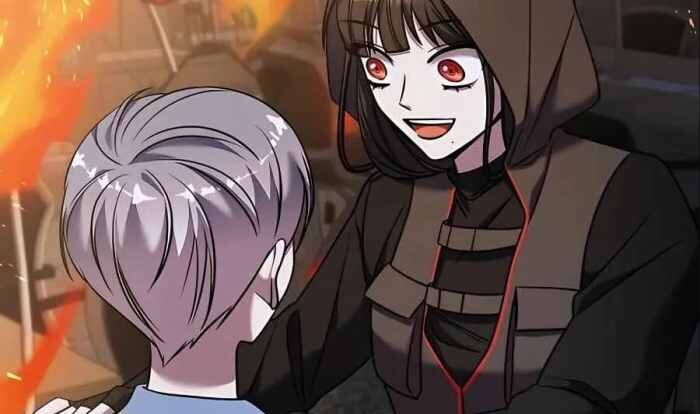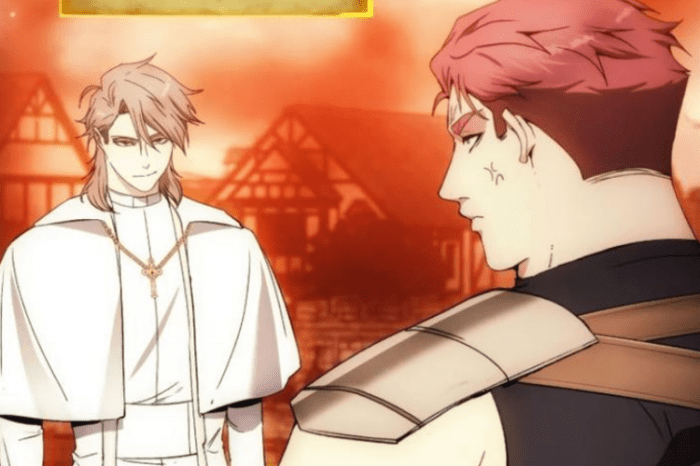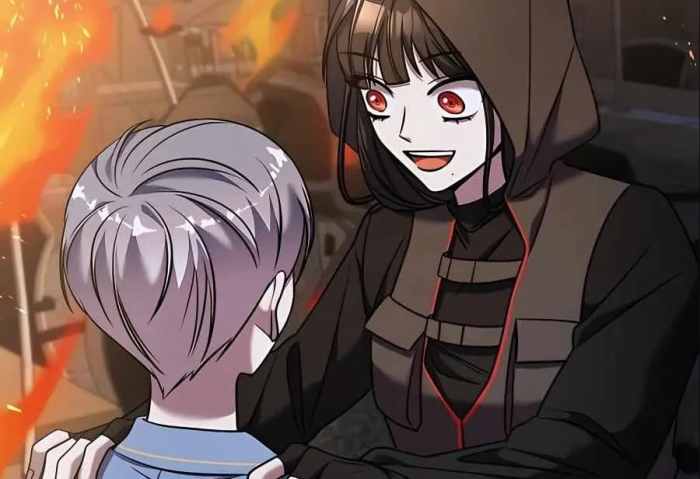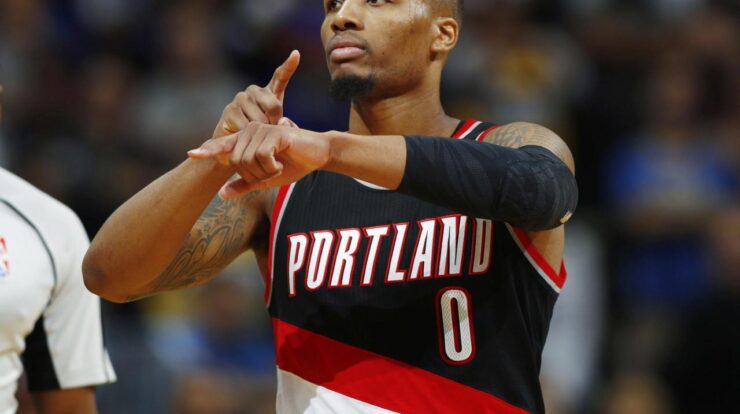
How to live as a villain ch 94 – In the realm of fiction, villains captivate our imaginations with their cunning, ambition, and enigmatic motives. Join us as we delve into the captivating world of “How to Live as a Villain” Chapter 94, where the boundaries of morality blur and the pursuit of power knows no bounds.
Prepare to unravel the intricate psychology of villains, their strategies for domination, and the societal impact of their nefarious deeds. Through literary and cinematic examples, we’ll explore the complexities of anti-heroes, the motivations that drive villains to commit heinous acts, and the enduring legacy they leave behind.
Villainous Attributes and Behaviors

In the realm of storytelling, villains are the catalysts for conflict, driving the plot forward with their nefarious schemes. They embody the dark side of humanity, representing our fears and anxieties. Understanding the key characteristics and motivations of a villain is crucial for creating compelling and believable antagonists.
Villains are often driven by a thirst for power, vengeance, or a twisted sense of justice. They may possess extraordinary abilities or cunning intellect, which they use to manipulate and control others. Their actions are often fueled by a deep-seated trauma or grievance that has twisted their perception of the world.
Famous Villains
Throughout history, literature, and film, countless villains have left an indelible mark on our collective consciousness. From Shakespeare’s Iago to Darth Vader of Star Wars, these iconic antagonists have captivated audiences with their cunning, ruthlessness, and tragic flaws.
- Iago(Othello): A master manipulator who uses jealousy and deceit to destroy the lives of others.
- Darth Vader(Star Wars): A fallen Jedi Knight who embraces the dark side of the Force, becoming a ruthless enforcer of the Empire.
- Hannibal Lecter(The Silence of the Lambs): A brilliant but cannibalistic psychiatrist who uses his intellect to outsmart his captors.
Psychological Aspects of Villainy
Villainy is a complex psychological phenomenon that can manifest in various forms. Villains may exhibit traits such as narcissism, psychopathy, or antisocial personality disorder. They may have experienced childhood trauma or abuse, which has led them to develop a distorted view of the world.
The impact of villainy on society can be devastating. Villains can inspire fear, distrust, and chaos. They can undermine the foundations of morality and justice, leaving a lasting scar on the collective psyche.
Villainy in Literature and Film

Villains are an essential part of any good story. They provide conflict, drama, and excitement. But what makes a great villain? What are the common tropes and archetypes that we see in popular culture? And how do different villains compare and contrast with each other?
In this section, we’ll take a closer look at the role of villains in literature and film. We’ll identify some of the most common villainous tropes and archetypes, and we’ll compare and contrast different villains from various works of fiction.
We’ll also analyze the role of villains in shaping the narrative and driving the plot.
Common Tropes and Archetypes
There are a number of common tropes and archetypes that we often see in villains. These include:
- The Evil Overlord: This is the classic villain who is motivated by a desire for power and control. They are often ruthless, cruel, and ambitious.
- The Mad Scientist: This villain is obsessed with science and technology, and they often use their knowledge to create weapons or inventions that can be used to harm others.
- The Femme Fatale: This villain is a seductive and dangerous woman who uses her charms to manipulate and control others.
- The Anti-Hero: This villain is not purely evil, but they have a dark side that can lead them to do bad things.
Comparing and Contrasting Different Villains
There are many different villains in literature and film, and each one has their own unique personality and motivations. Some of the most famous villains include:
- Darth Vaderfrom Star Wars
- The Jokerfrom Batman
- Hannibal Lecterfrom The Silence of the Lambs
- Freddy Kruegerfrom Nightmare on Elm Street
- Voldemortfrom Harry Potter
These villains are all very different, but they share some common traits. They are all intelligent, powerful, and ruthless. They are also all driven by a desire for power, control, or revenge.
The Role of Villains in Shaping the Narrative and Driving the Plot
Villains play an important role in shaping the narrative and driving the plot. They provide conflict, drama, and excitement. They also help to develop the protagonist’s character and motivations.
Without villains, stories would be much less interesting. They would be less exciting, less dramatic, and less meaningful. Villains are an essential part of any good story.
The Anti-Hero and the Moral Dilemma
An anti-hero is a protagonist who lacks traditional heroic qualities such as morality, idealism, and selflessness. They often possess questionable morals and engage in actions that would be considered unethical or even villainous. Anti-heroes challenge the conventional notions of good and evil, forcing audiences to confront the complexities of morality.
Ethical Complexities of Rooting for Anti-Heroes
Rooting for anti-heroes can evoke a sense of moral ambiguity in audiences. While we may admire their strength, intelligence, or charisma, their questionable actions raise ethical concerns. This tension creates a compelling narrative that forces us to grapple with the consequences of our choices and the nature of heroism.
Villainous Motivations and Justification
Villains are often driven by a complex web of motivations that justify their evil actions in their own minds. These motivations can range from personal trauma and societal pressures to ideological beliefs that shape their worldview. Understanding the motivations of villains provides insight into their characters and the challenges they pose to traditional notions of good and evil.
Personal Trauma
- Childhood abuse, neglect, or abandonment can lead to feelings of anger, resentment, and a desire for revenge.
- Traumatic events, such as war or natural disasters, can shatter one’s faith in humanity and drive them towards nihilism or violence.
Societal Pressures
- Poverty, inequality, and discrimination can create feelings of frustration and injustice, leading to a desire to rebel against the system.
- Social isolation and alienation can foster a sense of hopelessness and a need to belong to something, even if it is a group with nefarious intentions.
Ideological Beliefs
- Extreme ideologies, such as fascism, communism, or religious fundamentalism, can provide a sense of purpose and belonging, while justifying violence and oppression in the name of a higher cause.
- Beliefs in racial or ethnic superiority can lead to discrimination, hate crimes, and genocide.
Sympathetic Villains
You know that time when you’re like, “I’m so gonna live as a villain”? Well, this chapter is all about that. It’s got all the tips and tricks you need to be the baddest villain around. From how to dress the part to how to plot the perfect crime, it’s all here.
So if you’re ready to take your villainy to the next level, check out how to live as a villain ch 94 today!
Some villains evoke sympathy from the audience despite their evil actions. This is often due to their complex motivations and tragic backstories that humanize them. Sympathetic villains challenge the traditional definition of villainy, blurring the line between good and evil and raising questions about the nature of morality.
Yo, check this out! If you’re into villains, you gotta hit up how to live as a villain ch 94 . It’s the bomb! It’s got all the evil tips and tricks you need to become the ultimate villain. So what are you waiting for? Go check it out and start living the villainous life!
The Villain’s Legacy and Impact

Throughout history, villains have left an indelible mark on the world and its inhabitants. Their nefarious actions and cunning schemes have instilled fear, sparked admiration, and even led to redemption. This lasting impact is a testament to the power of villains to shape societal values and beliefs.
One of the most enduring legacies of villains is the fear they inspire. Their ability to inflict pain and suffering serves as a cautionary tale, warning people of the consequences of evil deeds. This fear can be a powerful deterrent, preventing individuals from engaging in harmful behavior.
Yo, check it, how to live as a villain ch 94 is the bomb! If you’re tryna be the baddest in the game, this is the chapter you need. It’s got all the juicy deets on how to take over the world and crush your enemies.
So click on how to live as a villain ch 94 and start your reign of terror today!
However, in some cases, it can also lead to paranoia and distrust.
Inspiring Admiration
Despite their malevolent nature, villains can also inspire admiration. Their intelligence, charisma, and determination can make them appealing to certain individuals. Some people may admire villains because they represent a rejection of societal norms or because they possess qualities that are seen as desirable, such as strength or cunning.
Yo, check this out! If you’re into the whole villain thing, you gotta hit up how to live as a villain ch 94 . It’s got all the tips you need to make your villain game strong. From plotting evil schemes to dealing with pesky heroes, this guide’s got you covered.
So, what are you waiting for? Dive into the dark side and become the baddest villain in town!
The Role in Shaping Societal Values, How to live as a villain ch 94
Villains play a significant role in shaping societal values and beliefs. By embodying the antithesis of good, they help to define what is considered moral and ethical. They can also challenge existing norms and force people to confront their own values.
In this way, villains can be a catalyst for social change.
End of Discussion
As we conclude our journey through Chapter 94, we gain a deeper understanding of the enigmatic nature of villains. Their actions may inspire fear, admiration, and even redemption, challenging our preconceptions of good and evil. Ultimately, the tale of “How to Live as a Villain” serves as a cautionary reminder of the destructive power of unchecked ambition and the resilience of the human spirit.
FAQ Explained: How To Live As A Villain Ch 94
What defines a villainous character?
Villains are characterized by their malicious intent, pursuit of power, and disregard for societal norms.
How do villains differ from anti-heroes?
Anti-heroes possess redeeming qualities or motivations that make them sympathetic despite their questionable actions.
What are the common motivations for villainous behavior?
Villains may be driven by personal trauma, societal pressures, ideological beliefs, or a thirst for vengeance.






